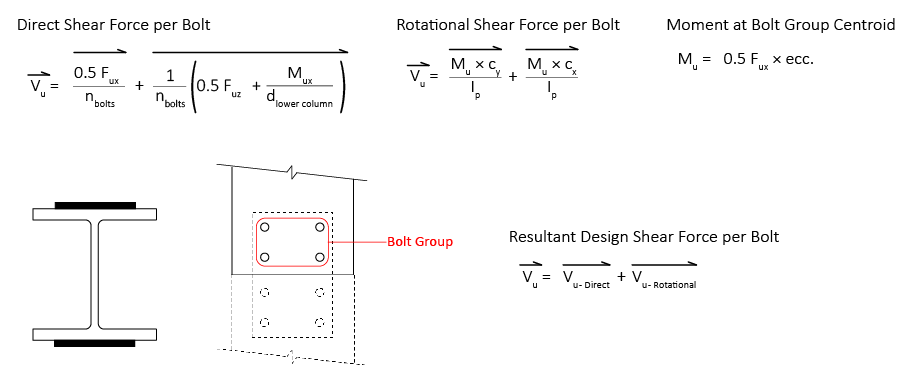The column splice design module consists of an upper and lower wide flange steel column, steel splice plates at the column flanges, and connecting bolts.
Full contact bearing in flange-plated column splices is always achieved when lighter sections are centered over heavier sections of the same nominal depth group. When the upper column depth is of a smaller nominal depth than the lower column, unfinished fillers may be used to "pack-out" the gap between the column flange and the splice plate. Since no force is transferred by these fillers, they are not included in the column splice design within VAConnect.
For the W-shapes most frequently used as columns, the distance between the inner faces of the flanges is constant throughout any given nominal depth group. VAConnect assumes that the ends of the columns are finished to bear on one another. The bearing strength of the projected bearing area of the column ends is much greater than the axial strength of the column per the AISC Specification and will seldom prove critical in the member design. For column splices transferring only compressive axial forces, complete force transfer may be achieved through bearing on finished surfaces and bolts or welds are only required by AISC to be sufficient to hold all parts securely in place. For this condition within VAConnect, only detailing checks are performed.
When shear and/or moment forces are applied to the connection, the limit states applicable to the strength of the splice plates, bolts, and column flanges will be calculated.
To determine the shear force on each bolt, the vector resultant of the direct shear force and the rotational shear force is calculated as shown below. Because the centroid of each bolt group is eccentric to the column ends, there will be a moment on each bolt group due to the applied shear force taken at the column ends.

To determine the tension force on each splice plate, the moment about the column's strong axis (Mx) is decoupled into a tension and compression force using the width of the lower column and added to any applied tension force.

VAConnect checks the following limit states for Column Splice connections (refer to the program’s detailed reports for specific code references):
Note that when a net tension force is present in the splice plates, the limit state of interaction between the tension, shear, and flexural forces is not considered and will need to be calculated outside of the program.
VAConnect makes the following design assumptions for Column Splice connections: